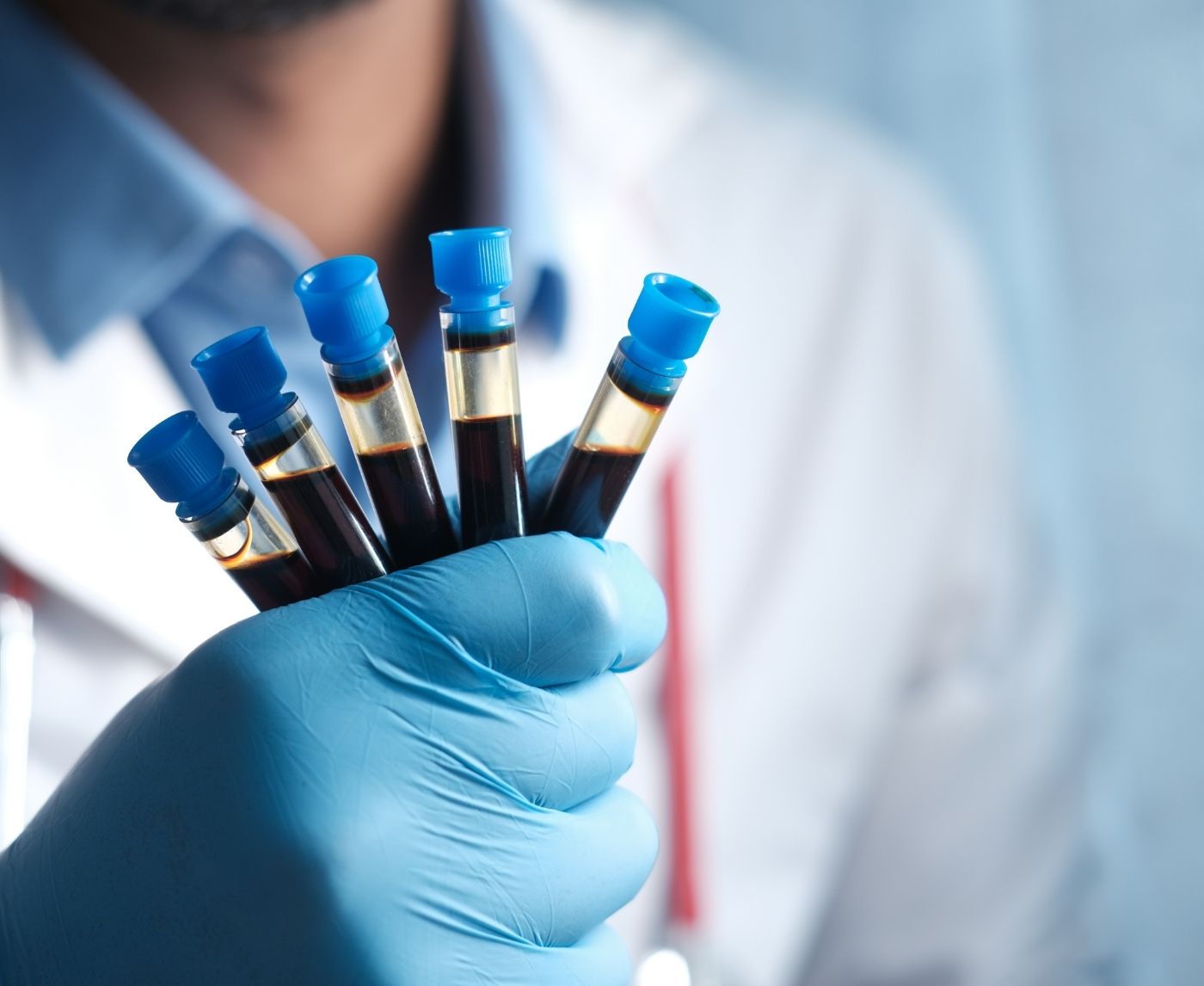How Soon After Sex Can You Test for HSV-1 or HSV-2?
Quick Answer: Condoms reduce but don’t fully prevent skin-to-skin STDs like Herpes, HPV, and Syphilis, because these infections spread from areas condoms don’t cover.
“I Used a Condom Every Time. I Still Got Herpes.”
Marcus, 27, still remembers the phone call. “The nurse told me it was herpes. I froze. I told her, ‘That’s impossible, I always use condoms.’ I couldn’t wrap my head around it.” He wasn’t reckless. He wasn’t careless. He trusted latex. But what he didn’t know is that Herpes Simplex Virus doesn’t care if you wrap a penis in plastic, it can live and spread on the groin, thighs, buttocks, even the mouth. Condoms reduce risk, yes, but they don’t erase it.
“It felt like betrayal,” Marcus said. “Like I played by the rules, and the rules didn’t matter.”
If you’ve landed on this page after a late-night panic search, you’re not alone. One of the biggest myths in sexual health is that condoms are a total shield. They’re not. They’re powerful, lifesaving, and essential, but some skin-to-skin STDs slip right around them. And this matters, because millions of people every year get exposed while believing they were fully protected.

People are also reading: Florida’s HIV Crisis by the Numbers Who’s Most at Risk and Why It’s Rising
This Isn’t Just Razor Burn, And Here’s Why
So what are the actual signs that you’ve caught something despite using a condom? The tricky part is that Herpes, HPV, and Syphilis don’t always show up right away, and when they do, the symptoms can look like anything from an ingrown hair to a heat rash. That’s why so many people delay testing. They convince themselves it’s irritation from shaving, or just friction from sex. But if the spot doesn’t heal quickly, or it comes back, that’s when suspicion should spike.
Skin-to-skin STDs often start subtle: a single wart, a blister you swear is a pimple, or a painless sore that doesn’t itch. Unlike infections such as Chlamydia or Gonorrhea, which condoms are very effective at blocking, these viruses and bacteria spread from any patch of skin that makes direct contact. If your partner has a lesion on their inner thigh, scrotum, or vulva, the virus can still pass even if the condom is used perfectly.
And that’s the heartbreak for people like Marcus, he wasn’t “reckless.” He just wasn’t told the full story.
Public health experts agree: condoms are one of the greatest inventions in sexual health:
- They reduce the risk of HIV by more than 90% when used correctly.
- They’re highly effective at stopping Chlamydia and Gonorrhea, because those infections spread through fluids, not through exposed skin.
But here’s the issue: when it comes to Herpes and HPV, research shows that condoms only cut transmission risk by about 30–50% (CDC). That means if you’re relying solely on latex, you’re still rolling the dice.
It’s not because condoms are “bad” or “ineffective.” It’s because the human body is bigger than a condom. HPV lesions can appear on the vulva, anus, or base of the penis. Syphilis sores might show up on the scrotum or lips. Herpes blisters often pop up on the thighs or buttocks.
None of these areas are covered by a standard condom. And during sex, bodies touch everywhere, thighs press, stomachs rub, hands wander. That’s how skin-to-skin infections move, even when protection is in place.
The Myth of “Safe Sex” vs. “Safer Sex”
Here’s where language betrays us. For decades, sex ed has sold the phrase “safe sex.” But the reality is: there is no such thing as 100% safe sex. What we actually mean is “safer sex.” Condoms make sex safer. Testing makes sex safer. Vaccines like the HPV shot make sex safer. Honesty with partners makes sex safer. But latex alone doesn’t lock down every risk. Believing it does sets people up for shame when they discover an infection later.
Leila, 22, told me she stopped dating for six months after being diagnosed with genital warts. “I thought people would assume I was dirty or irresponsible. But I used protection every single time. Nobody ever told me HPV spreads from skin contact. I felt stupid, but I realize now it wasn’t my fault. I just wasn’t given the facts.”
“I felt stupid, but I realize now it wasn’t my fault.”
This is where stigma gets dangerous. Shame silences people, stops them from testing, and makes infections spread further. When we tell the truth about condoms and their limits, we don’t scare people, we empower them.
If you’ve tested positive for Herpes, HPV, or Syphilis despite being “careful,” know this: you weren’t careless. You weren’t reckless. You weren’t wrong to trust protection. Condoms work incredibly well at what they’re designed for. They just weren’t designed to cover every square inch of human skin. Blaming yourself for something science already acknowledges is unfair and unhelpful. The only mistake is staying silent and not getting answers when symptoms appear.
So What Do You Do When Latex Isn’t Enough?
The first step isn’t panic. It’s clarity. The truth is, millions of people have healthy, joyful sex lives while navigating skin-to-skin STDs. Some live with Herpes and manage outbreaks. Others get the HPV vaccine and reduce their risks dramatically. Some get tested regularly so they never have to wonder. You have options, and none of them require giving up intimacy.
Jenna, 31, laughed when she told me how her partner reacted after their first STD talk.
“I was shaking, my palms were sweating, and then he just said, ‘Cool. Let’s order a test kit together.’
That moment completely rewired how I thought about testing. It wasn’t about blame or suspicion. It was about taking care of each other.” That’s the kind of energy we need more of in sexual health: care, not shame.
So let’s get practical. Condoms matter, absolutely. But so do these steps:
Get the HPV vaccine if you’re eligible. Even if you’re already sexually active, the vaccine protects against strains that cause genital warts and cervical cancer. Talk to your provider, many people don’t realize they can still benefit in their 20s or even early 30s.
Know the early signs of skin-to-skin STDs. That means looking for small clusters of blisters (Herpes), cauliflower-like growths (HPV), or painless sores that don’t heal (Syphilis). If something feels off, trust your gut and get tested.
Test regularly, even when you feel fine. Many STDs are silent for months or years. That’s where at-home options come in. With something like a 7-in-1 Complete At-Home STD Test Kit, you can discreetly check for multiple infections without stepping foot in a clinic.
The Power of Knowing, Not Guessing
Here’s the thing about anxiety: it feeds on the unknown. When you’re refreshing Google at 2 a.m. wondering if a bump is a pimple or herpes, your mind always jumps to the worst case. Testing isn’t just about medical accuracy, it’s about reclaiming peace of mind. Imagine how different Marcus’s story could have been if, instead of spiraling, he’d had a kit in his drawer and results in his hand within minutes.
“End the guessing game, know your status now.”
Condoms are incredible. But they’re only one piece of the puzzle. Pair them with testing, vaccines, and honest conversations, and you’re not just reducing risk, you’re building trust, intimacy, and resilience in your sex life. That’s the part nobody teaches in sex ed, but it’s the part that makes all the difference.

People are also reading: My Partner Has HPV. Am I at Risk, And What Should I Do Next
FAQs
1. Can you really get herpes if you always use condoms?
Unfortunately, yes. Condoms lower the odds, but herpes can show up on the thighs, butt, or even around the mouth, places condoms don’t cover. If your partner has an outbreak or viral shedding in those areas, skin contact can pass it along. It doesn’t mean you “did something wrong.” It just means viruses don’t care about latex borders.
2. Which STDs laugh at latex?
Think of Herpes, HPV, and Syphilis as the three tricksters. They don’t need fluid exchange, just skin-to-skin. A quick grind, oral sex without a barrier, or even a sore on the scrotum pressed against skin can be enough. Condoms block a lot, but not everything.
3. How fast would I know if I caught something?
Annoying truth: there’s no one-size timeline. Herpes can flare in a week. HPV warts might not show up for months. Syphilis can be sneaky with a painless sore weeks later. That’s why testing, not waiting for symptoms, is your best bet.
4. Does the HPV vaccine mean I don’t need condoms anymore?
Not quite. The HPV vaccine is incredible, it prevents the most dangerous strains that cause cancer and warts. But it doesn’t block every STD. Condoms are still your friend for Chlamydia, Gonorrhea, and especially HIV. Think of the vaccine and condoms as teammates, not replacements.
5. Can I get an STD without “real” sex?
Yep. Grinding, oral, mutual touching, if skin or fluids mix in the right (or wrong) way, infection can happen. That’s why people sometimes get herpes even if they’ve “never gone all the way.” It’s not a loophole, it’s just biology.
6. I found a bump. Is it herpes, or am I freaking out?
Honestly? It could be either. Ingrown hair, razor burn, friction, those all happen. But herpes blisters usually feel tender or burn, and HPV warts don’t go away with shaving cream. If you’re stuck in Google loops, testing is the only way to stop the spiral.
7. What about syphilis, is it still around?
Unfortunately, yes, and cases are rising worldwide. One painless sore can spread it. Condoms help, but if that sore is on uncovered skin, it’s still transmissible. The good news? Syphilis is curable with antibiotics when caught early. That’s why regular testing matters.
8. Can I really test for these things at home?
Absolutely. Some kits check for multiple infections, some for specific ones. Imagine skipping the waiting room and knowing within minutes. Combo test kits make that possible. It’s discreet, fast, and way less awkward than stalling another week.
9. Why didn’t anyone tell me condoms aren’t 100%?
Because sex ed often sells “safe sex” as a slogan, not the messy truth. It’s easier to say “just use a condom” than “condoms are amazing but not foolproof.” But you deserve the full picture. Knowing the limits doesn’t make condoms less valuable, it just makes you smarter about your choices.
10. What’s the smartest way to protect myself then?
Layer it up. Condoms, vaccines, regular testing, and honest conversations. None of these make you invincible, but together they create a net strong enough to let you have the sex you want with way less anxiety. That’s real safety, not perfection, but protection.
Now That You Know. Take Precautions.
If you’ve read this far, you already know the truth: condoms are powerful, but they aren’t magic. Skin-to-skin STDs don’t care if you “did everything right.” That’s not a failure on your part, that’s biology. What matters now is what you do next.
Don’t let fear or shame keep you stuck in the unknown. Testing is care, not confession. Prevention is love, not paranoia. And knowledge is power, not punishment.
Don’t wait and wonder, get the clarity you deserve. This at-home combo test kit checks for the most common STDs discreetly and quickly.
Sources
1. Healthline
2. What STDs Cannot Be Completely Prevented by Condoms? – Verywell Health
3. Mayo Clinic
4. CDC






